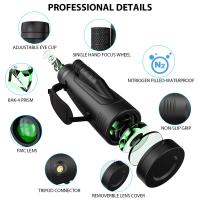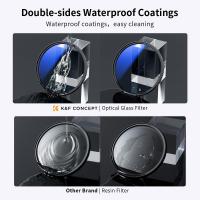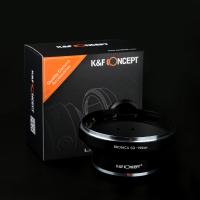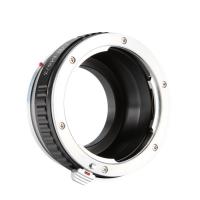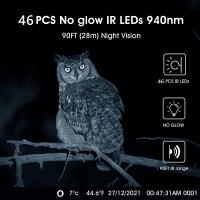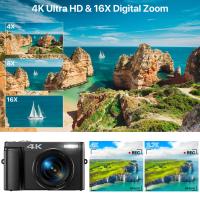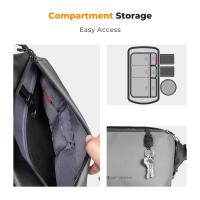How Are Binoculars Rated ?
Binoculars are typically rated based on several key factors, including magnification power, objective lens diameter, field of view, exit pupil size, and overall build quality. These ratings help determine the performance and suitability of binoculars for different purposes. Magnification power refers to how much closer the binoculars can make objects appear, while objective lens diameter affects the amount of light that can enter the binoculars, influencing brightness and image quality. A wider field of view allows for a larger area to be seen at once, while exit pupil size affects the brightness of the image. Additionally, build quality factors such as lens coatings, prism type, and overall durability also contribute to the rating of binoculars.
1、 Magnification power
Binoculars are rated based on several factors, with magnification power being one of the most important considerations. Magnification power refers to the degree to which the binoculars can enlarge the image of the observed object. It is typically denoted by a number followed by an "x" (e.g., 8x or 10x), which indicates how many times larger the object will appear compared to the naked eye.
The magnification power of binoculars is crucial in determining their suitability for different activities. Higher magnification can provide a more detailed view of distant objects, making it ideal for birdwatching, stargazing, or observing wildlife from a distance. However, higher magnification also tends to reduce the field of view and make the image shakier, especially when hand-held. Therefore, for activities that require a wider field of view or steady viewing, such as sports events or marine use, lower magnification binoculars are preferred.
It is important to note that while magnification power is a significant factor, it is not the sole determinant of binocular quality. Other factors, such as the quality of the lenses, the size of the objective lens (which affects the amount of light gathered), and the overall build and design of the binoculars, also play a crucial role in determining their performance.
In recent years, there have been advancements in binocular technology, leading to the development of image stabilization systems that help counteract hand tremors and provide a steadier view, even at higher magnifications. Additionally, some binoculars now feature adjustable magnification, allowing users to switch between different levels of magnification depending on their needs.
Overall, while magnification power is an important factor in rating binoculars, it is essential to consider other factors as well to ensure optimal performance and suitability for specific activities.
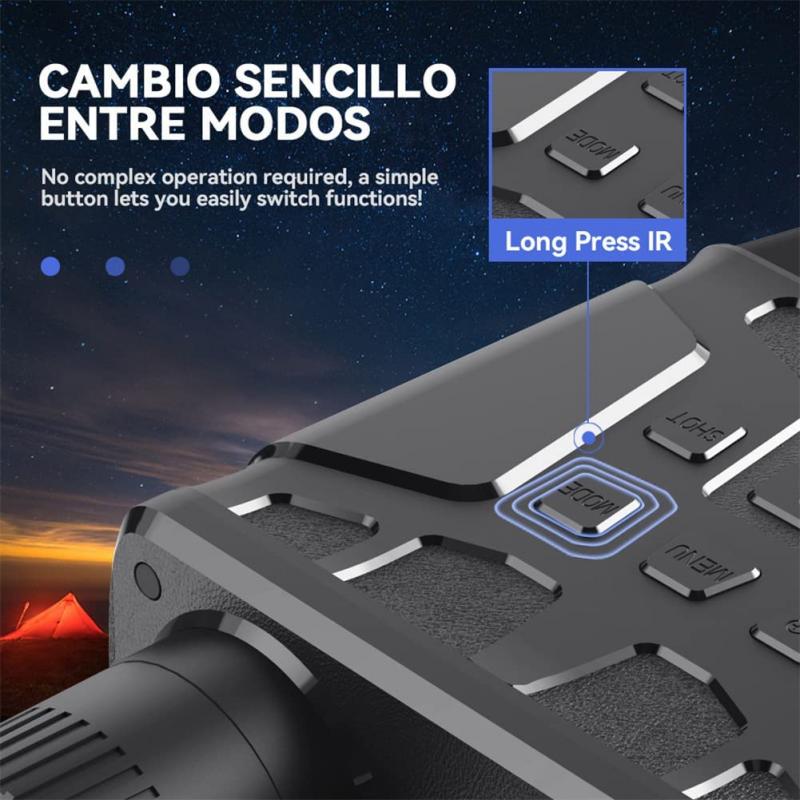
2、 Objective lens diameter
Binoculars are rated based on several factors, and one of the most important factors is the objective lens diameter. The objective lens diameter refers to the size of the front lenses of the binoculars, measured in millimeters. It plays a crucial role in determining the amount of light that enters the binoculars and ultimately affects the brightness and clarity of the image.
A larger objective lens diameter allows more light to enter the binoculars, resulting in a brighter image. This is particularly important in low-light conditions, such as during dawn or dusk, or when observing distant objects. Binoculars with larger objective lenses are generally preferred for activities like stargazing, birdwatching, or hunting in dimly lit environments.
However, it is important to note that a larger objective lens diameter also means a bulkier and heavier pair of binoculars. This can make them less portable and more challenging to carry around for extended periods. Additionally, larger objective lenses can also lead to a narrower field of view, which may limit the user's ability to scan large areas quickly.
In recent years, there has been a trend towards compact and lightweight binoculars with smaller objective lens diameters. Technological advancements have allowed manufacturers to improve the quality of optics, resulting in brighter and clearer images even with smaller lenses. These compact binoculars are highly popular among travelers, hikers, and outdoor enthusiasts who prioritize portability and convenience.
Ultimately, the choice of objective lens diameter depends on the intended use and personal preferences of the user. It is essential to consider factors such as lighting conditions, desired image quality, and portability when selecting binoculars.
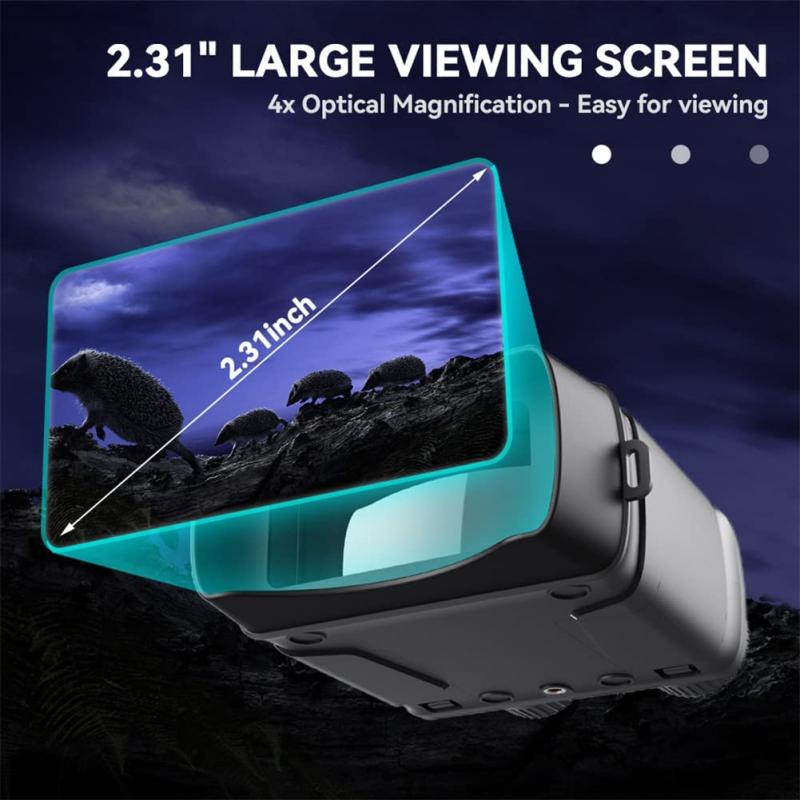
3、 Field of view
Binoculars are rated based on various factors, and one of the key considerations is the field of view. The field of view refers to the width of the area that can be seen through the binoculars at a specific distance. It is typically measured in degrees or feet at a certain distance.
A wider field of view allows for a larger area to be observed, making it easier to track moving objects or scan a wide landscape. On the other hand, a narrower field of view may provide more magnification but limits the amount of scenery that can be seen at once.
When rating binoculars based on field of view, manufacturers take into account the optical design, lens quality, and magnification power. Higher quality binoculars often have wider fields of view due to advanced lens coatings and design techniques.
It is important to note that the field of view can vary depending on the magnification power of the binoculars. Higher magnification typically results in a narrower field of view, as the optics are focused on a smaller area. However, advancements in technology have allowed some manufacturers to offer wider fields of view even at higher magnifications.
The latest point of view regarding field of view in binoculars is that manufacturers are constantly striving to improve this aspect. They are developing innovative optical designs and incorporating wider lenses to provide users with a more immersive viewing experience. Additionally, some binoculars now feature adjustable field of view, allowing users to customize the width based on their preferences.
In conclusion, the field of view is an important factor when rating binoculars. A wider field of view provides a broader perspective, making it easier to observe moving objects or scan large areas. Manufacturers are continuously working to enhance the field of view in binoculars, offering users a more immersive and enjoyable viewing experience.
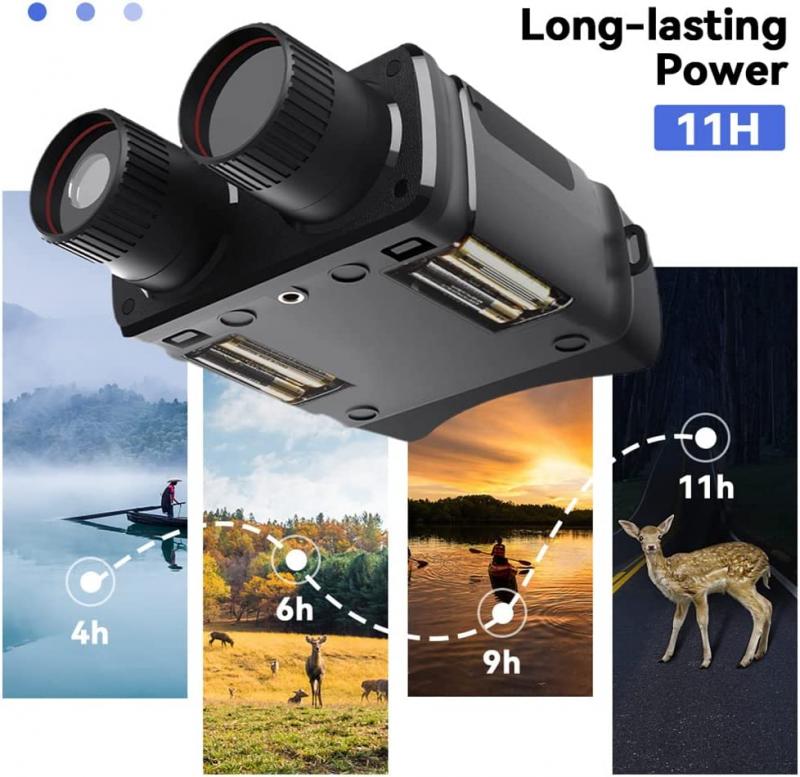
4、 Exit pupil size
Binoculars are rated based on various factors, and one important aspect is the exit pupil size. The exit pupil refers to the diameter of the beam of light that exits the eyepiece of the binoculars and enters the viewer's eye. It is calculated by dividing the objective lens diameter by the magnification power of the binoculars. For example, if a pair of binoculars has an objective lens diameter of 40mm and a magnification power of 8x, the exit pupil size would be 5mm (40mm/8x).
The exit pupil size is crucial because it determines the amount of light that reaches the viewer's eye. A larger exit pupil allows more light to enter the eye, resulting in a brighter image, especially in low-light conditions. This is particularly important for activities such as stargazing or birdwatching at dusk or dawn.
However, the importance of exit pupil size may vary depending on the intended use of the binoculars. For daytime activities, such as wildlife observation or sports events, a larger exit pupil may not be as critical since there is usually sufficient ambient light. In such cases, other factors like lens quality, field of view, and image clarity may take precedence in the rating of binoculars.
It is worth noting that individual preferences and visual acuity also play a role in determining the ideal exit pupil size. Younger individuals typically have larger pupils and can benefit from binoculars with larger exit pupils. On the other hand, older individuals may have smaller pupils due to age-related changes in the eye, and may not fully utilize the advantages of a larger exit pupil.
In recent years, there has been a growing trend towards binoculars with larger exit pupils, as manufacturers recognize the importance of low-light performance. This is particularly evident in premium binocular models, where exit pupil sizes of 5mm or even larger are becoming more common.
In conclusion, the exit pupil size is an important factor in rating binoculars, especially for low-light conditions. However, its significance may vary depending on the intended use and individual preferences. It is advisable to consider other factors such as lens quality, field of view, and image clarity in conjunction with exit pupil size when selecting binoculars.











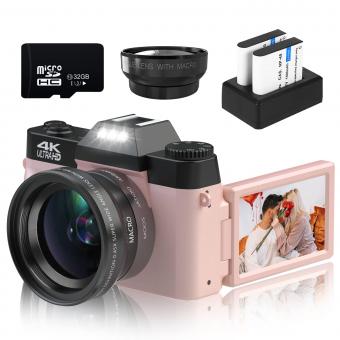










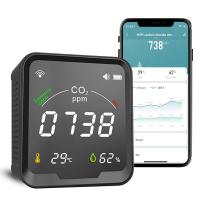
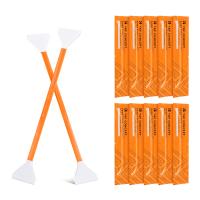

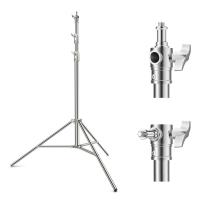

![Supfoto Osmo Action 3 Screen Protector for DJI Osmo Action 3 Accessories, 9H Tempered Glass Film Screen Cover Protector + Lens Protector for DJI Osmo 3 Dual Screen [6pcs] Supfoto Osmo Action 3 Screen Protector for DJI Osmo Action 3 Accessories, 9H Tempered Glass Film Screen Cover Protector + Lens Protector for DJI Osmo 3 Dual Screen [6pcs]](https://img.kentfaith.de/cache/catalog/products/de/GW41.0076/GW41.0076-1-200x200.jpg)



